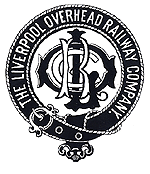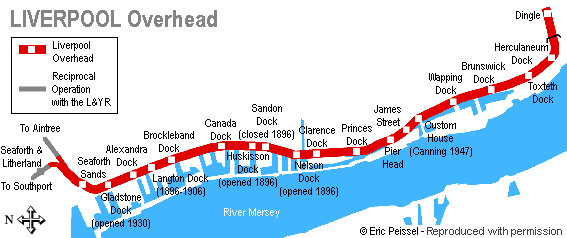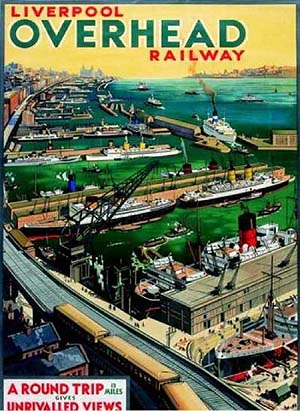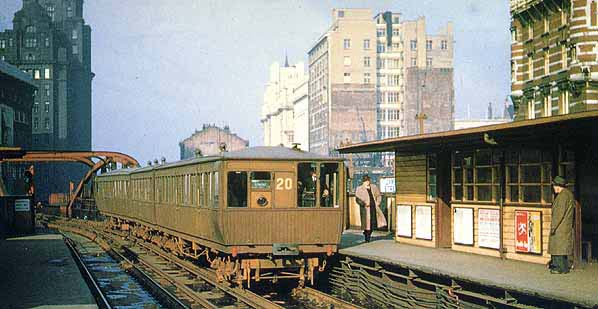
LIVERPOOL OVERHEAD RAILWAY
|
 |
An elevated railway had been proposed as early as 1852 but came to nothing. It emerged again, in 1877, when the Mersey Docks and Harbour Board sought permission for a single line with passing loops at stations. This was rejected as being insufficient to meet the likely needs of the rapidly growing port but, five years later, an improved scheme did receive sanction. Unfortunately, at that time, the company had reviewed its policy towards transporting the public and again, nothing was done. |
Finally, in 1888, a prominent group of businessmen
formed the Liverpool Overhead Railway Company and obtained the Dock
Board's powers by an Act of Transfer. Two leading engineers, Sir
Douglas Fox and James Henry Greathead, were commissioned to design
the railway and work commenced in October 1889.
Amongst the many problems encountered was the decision
as to motive power. Steam was considered too dangerous to the many
flammable cargoes within range of locomotive sparks.

This was one of the reasons electric traction was chosen, in 1891; other advantages being economy, speed, cleanliness and quiet running.
|
Work was completed in January, 1893 and the line was formally
opened on February 4th that year by the Marquis of Salisbury
with public transport commenced on the 6th of March. |
 |

Photo:James
Street Station in the 1950's
Photo by T J Edgington
Extensive bomb damage was inflicted during the Blitz but it was quickly repaired to maintain the smooth running of the docks. Modernisation of some of the nineteen 3-car sets had begun as the War drew to a close and eight were in operation by 1955. In the same year, the curved deck plates which supported the track were reported as being in need of replacement at an approximate cost of two million pounds. This was beyond the financial resources of the company, who looked to the City Council and the Mersey Docks and Harbour Board for assistance. No adequate solution could be found and, despite rigorous public protests, the railway closed on December 30th, 1956. Rescue attempts continued until September, 1957, when the dismantlers moved in.
Click here to go back to list of stations

|
|
 Home Page
Home Page | Last updated: Thursday, 18-May-2017 17:21:36 CEST |
© 1998-2005 Disused Stations
|